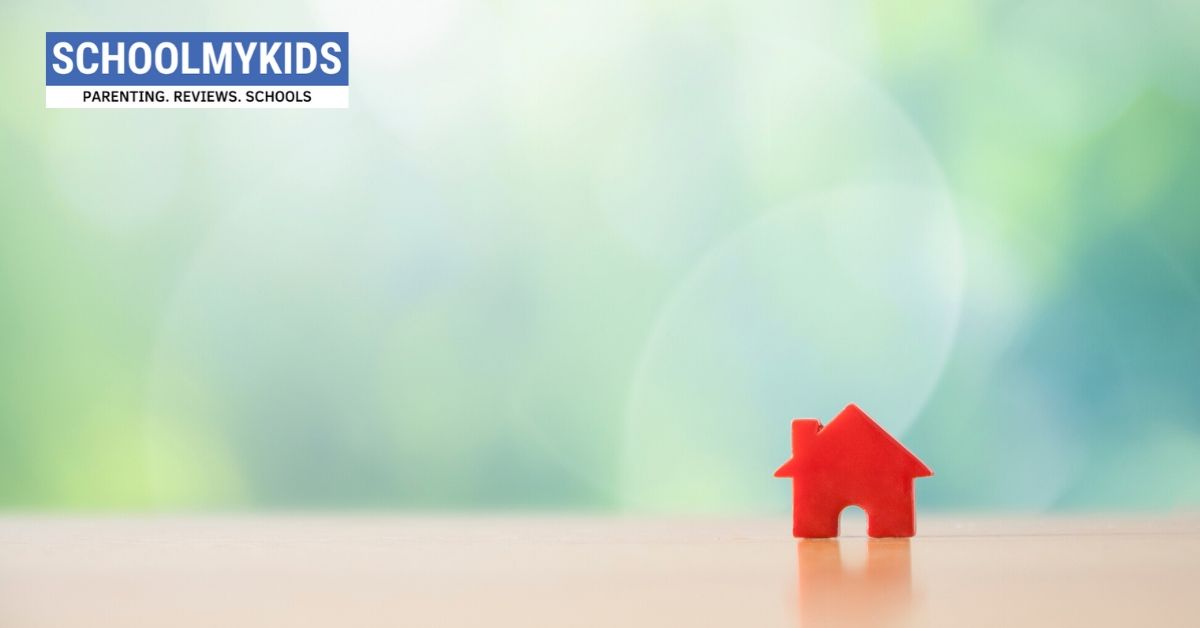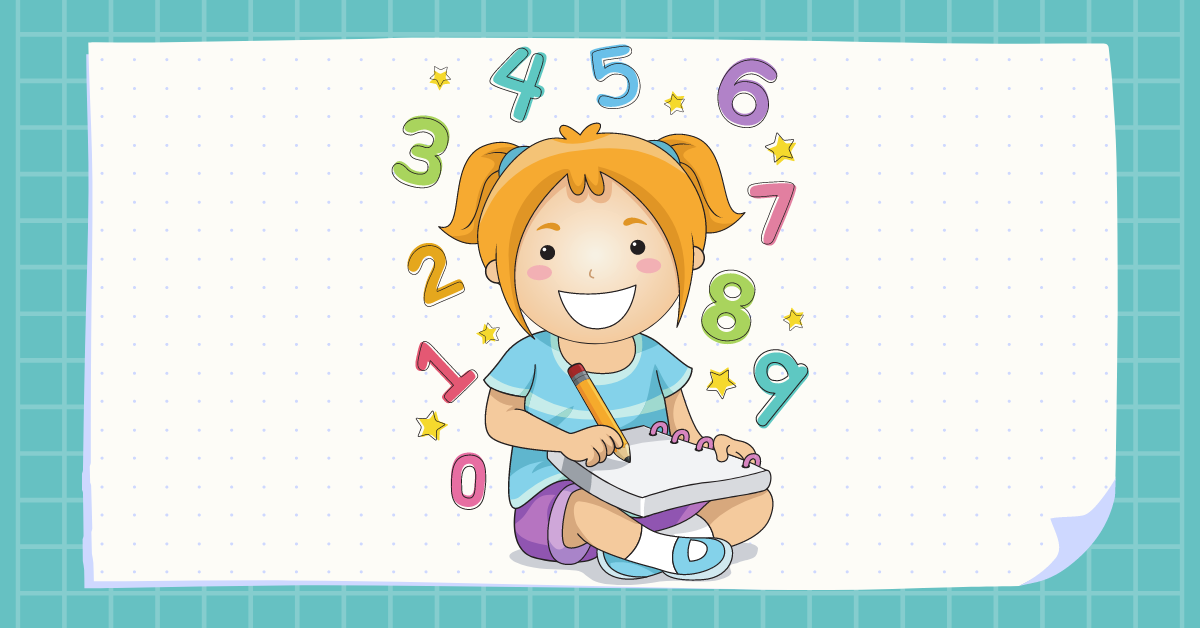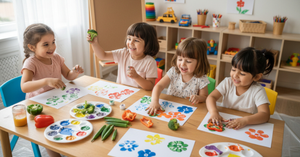We are big fans of doing science and art kits with our kid. But we’ve used most of the purchased kits we had on the bookshelf. And while we can have food delivered in Delhi, we haven’t been able to buy much of anything else. If you are home with the kids, this is also an opportunity to clean out your cupboards and closets or wherever else you store the half-empty bottles of lotion and old flowerpots and planters. This is also an opportunity to follow through on kid-related activities that don’t require anything except your time and attention.
You have everything you need at home to keep your kids busy and engaged, while crossing out your to-do list, and throwing in a good educational lesson or two in the process. Here are 10 tips to help you plan an activity using everyday items you already have at home.
1. What’s in Your Cupboards, Basement, Garage?
Explore your house for items you can potentially use for an activity with the kids. Do you have any jars in storage? How about seeds you never got around to planting? What’s your status on art supplies, old toys, clothes in storage? Chances are you have more than you realize. You just need a few ideas to help get you started.
2. Grow a Vegetable Garden Together
As you explore your home, maybe you come across some old pots and planters, or digging tools, even better some seeds you never got around to using. And if you don’t have seeds, harvest a few from your next purchase of peas, capsicum, or melons. Here are a few tips to help get you started:
- Find a book, YouTube Video, or online resource that both you and your kid can learn from together.
- Include your kid in planning the garden. Where will it be? What will you plant? Who will water, and when? Also, provide space for your kid’s own plot. That’s where they get to make the rules without you interfering! It’s so important to give our kids choices when developing a project. Check out one of my previous blogs Providing Choices for Our Kids.
- Document your progress from planning the garden to harvesting and cooking the vegetables. Set aside a blank notebook as a journal so both of you can record your thoughts and monitor your progress.
- This is also an excellent opportunity to explain and start your family’s own compost piles.
Growing a vegetable garden is a great time to talk about nutrition, and all the steps involved in how food moves from the farm to your table.
3. Start a Recycling Program
This is a great tip if you already recycle or you’ve always wanted to start. Do you have any old bins or cardboard boxes you aren’t using? Or if you are already recycling, couldn’t those bins use a good cleaning and a few decorations? Whichever situation you’re in, it’s always a good idea to involve our kids in recycling, so consider having the kids label and decorate the bins. For example, spell out and color labels for each category like glass, plastic, metal, and paper. Then draw, color, and cut out examples of each category. For example, for glass, it could be glass bottles and jars. Check out this Pinterest for examples and more ideas to help start a recycling program at your home with everyday items. And check out YouTube for age-appropriate videos about recycling you can watch and learn from together.
4. Make a Giant Maze
This is a great activity that challenges our kids’ creativity and can potentially keep them busy for a couple of hours. All you need is a marble or tile floor and masking or painters’ tape. You may also need to create a couple of mazes before the kid is ready to construct their own. But once they are ready, get out of the way!
- Create with the tape a large-scale maze. I suggest a maze around 2 meters by 2 meters.
- After the maze is created, have your kid decorate it.
- After the maze is decorated, solve the maze together.
For examples and more ideas, check out on internet How to Make a Giant Floor Maze.
5. Look Through Old Photos
Another tip to take advantage of this added time together is to look through old photos with the kids. Family stories are so important, and this might be the perfect time to pass on your memories and share a few stories about the family.
6. Scrapbook Together
After looking through your old photos, another tip for which you likely already have supplies is either updating or starting your own scrapbook. Our kids are living through a historical, global moment, so beginning with their day to day life during the pandemic might be an excellent place to start. It might also be a good way for kids to process their experience while providing parents with insight on how their kids are doing. Check out online, How to Make Homemade Scrapbooks and 2020 Pandemic Journal we are using with our daughter, to help get you started.
7. Conduct Science Experiments
While we love science kits, and there are some amazing ones out there, you have everything you need into your cupboards and closets to turn your kitchen into a laboratory. Would the kid like to grow rock candy and learn about crystallization, or use lemon juice to create invisible ink? Or during this pandemic, it might be helpful to use glitter to help explain how germs spread. Check out 64 Easy Science Experiments for Kids to Do at Home for these and other ready-to-go science experiments.
Put Together a Homemade Cleaning Kit
Based on what you have at home, another tip is to put together a kid’s homemade cleaning kit. Here are a few tips:
- Find a container to hold the cleaning supplies and let your kid decorate it.
- A few examples of items to include—rubber gloves, sponges, colorful towels, kid-size broom, and dustpan.
- A daily cleaning chart. Let them help you put the chart together.
You’ll be pleasantly surprised when you provide your child with their own cleaning kit and help to put the cleaning chart together. Also, there are several sources online to help you make all-natural, kid-safe, cleaning products. A great site to help you understand which chemicals aren’t safe, how to make your own natural cleaning products, and a guide on which natural products to use on which stains, check out Non-Toxic Home Cleaning.
8. Take the Kids to the Spa
Everyone needs a day at the spa during the pandemic. So, recreate your favorite spa experience as best you can. And don’t forget to include the boys. I’ve personally had my finger and toenails painted a few times. Here are a few spa elements you can easily add:
- Create an invitation and put a sign on the door where the spa day will take place.
- Find some spa-inspired background music.
- Create a spa-inspired menu of small sandwiches, fruit, snacks, and cookies or whatever else you have. Include beverages like lemonade or cucumber water.
- Also, create a spa menu of the options they can choose from. Or a list of activities you will do first, second, third, and so on.
- Everyone needs a bathrobe and sandals.
- A few activities you can potentially include are a foot soak, pedicure/manicure, facemasks, sliced cucumbers for the eyes, loofas, and other types of scrubbers.
- Go through your supply of facial cleansers, body scrubs, and lotions that you haven’t used in months to complete your spa day experience. The internet has no shortage of recommendations of food products to use in your beauty routine: mayonnaise in your hair? Turmeric facial? The sky (or your cupboard) is the limit.
- Finish up with painting the nails and taking turns giving foot and shoulder massages.
Check online for more ideas and examples.
9. Reorganize Toys and Swap Out Clothes
My last tip is to enlist the help of your kid to swap out toys they are no longer using and swap out clothes they have outgrown or out of season. For our daughter, it is tough for her to give up her old toys or clothes, even if they are a couple of sizes too small. This is an excellent opportunity to talk about gratitude and why we donate what we no longer need. In Delhi, any time we are in the car, we are reminded by the homeless who come up to the car to ask for money or food. During the pandemic, depending on the age of your child, they may be aware of families who are struggling. We have leveraged these types of experiences to motivate and help her consider what she no longer needs and is willing to give away. My best advice is to not force the process. Let them know that if there’s something they don’t want to give away, that’s okay. By letting our daughter know that she can keep what she wishes to, she becomes less defensive and more willing to let go.
10. Mix the Activities Up
One of my most frustrating problems is providing my daughter too much time for an activity. I’m slowly figuring out that it takes time for her to get started and forcing her to start an activity seldom works. And once she’s into an activity, she only has about thirty minutes before she needs to move onto something else. While I know thirty minutes is developmentally appropriate for a six year old, I often lose track of time and want her to continue when she’s ready to stop. All of these activities can be spread out over weeks or months. So, if your kid loses interest, and it does happen, stay where you are and start up again the next day or a few days later. In my experience, more often than not, while she may have expressed her frustration and dislike for an activity, she’s willing to continue once we take a break.








Be the first one to comment on this story.